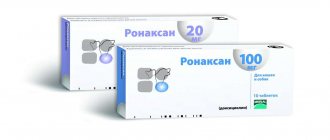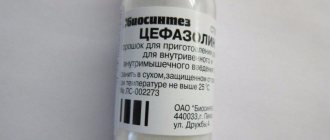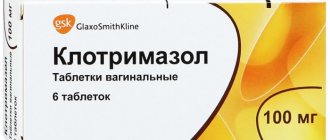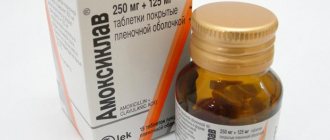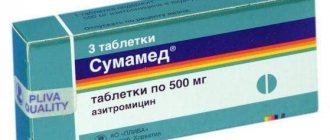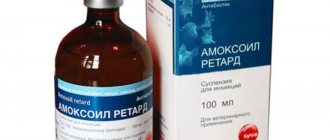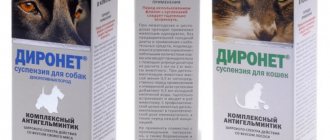12278Pavel
Smecta is rightfully considered one of the most effective drugs that helps a person cope with diarrhea. However, for the felines he became an equally loyal friend. The main thing is to learn how to correctly calculate the dosage. Moreover, you can understand how to give Smecta to a cat by carefully reading just one article. Intestinal upset is not a rare disease for your beloved pet. There is always a reason for diarrhea. It could be something unsuitable for food, obtained on the street, or a stolen piece from the table. In any case, Smecta will be the salvation.
Description of the drug
Smecta is a medicine of natural origin, developed on the basis of double silicate of aluminum and magnesium. Available in the form of powder (granules) for the preparation of a suspension, which is taken orally.
The finished solution normalizes the condition of the mucous membranes in the gastrointestinal tract, helps to increase the volume of mucus produced, and improves its gastroprotective properties.
The medicine helps remove pathogenic microorganisms from the intestines and stomach without having a negative effect on the digestive tract.
The powder is used in the symptomatic treatment of chronic and acute gastrointestinal disorders (chronic diarrhea for 2-4 weeks).
How to give medicine to a pet?
If you have an obedient and flexible pet, you are already very lucky. It is enough to take a syringe (preferably no more than 10 ml in volume), remove the needle from it, fill it with the required amount of dissolved Smecta and pour it into the dog’s cheek.
To do this, take the syringe in your right hand (if you are right-handed), pull back the dog’s right cheek with your left hand, insert the tip of the syringe deeper into the gap between the chewing teeth and pour in the medicine.
When the dog starts coughing, sneezing or spitting, hold your mouth for 2-3 seconds so that the maximum amount of the drug still gets inside.
If you are a very loyal owner, you can first give her some goodies from the same syringe. In this way, the animal will sooner understand that all these strange manipulations are only for the good. By the way, after that you can also pour in some deliciousness. And then the dog will like this “game” even more.
If you are much less fortunate than the owners from the category described above, and your pet is a wayward, independent creature, you will have to put in a little more effort. All the basic manipulations are the same as in the first case, except that it would be useful to first bandage the dog’s muzzle with a wide bandage.
Apply the bandage as close to the tip of the nose as possible, leaving your cheeks freely accessible.
It is extremely important to correctly calculate the force of the constriction: the dog should be left without the opportunity to bite you, but at the same time, it should make swallowing movements without any problems. Otherwise, Smecta will leak out.
Reference! Smecta is intended primarily for people, so the powder can increasingly be found with flavorings. But when purchasing Smecta for an animal, choose a product with a neutral odor. Otherwise, the drinking process can become significantly more complicated due to the fact that the dog does not share our preferences for strong fragrant odors.
Is it possible to give Smecta to cats?
Digestive upset in an adult cat or kitten is a common occurrence.
In this case, Smecta can and even should be used: the animal’s unpleasant symptoms go away within a few hours, and it feels much better.
The owner needs to make sure that the cat has swallowed the medicine . If this fails, the animal is given the drug again.
In some cases, you cannot do without outside help: you may need to restrain the animal so that it does not twitch and the medicine gets directly into the mouth.
If the cat does not feel better, the drug is repeated after 3-4 hours. To prevent dehydration, it is recommended to give plenty of fluids.
It is prohibited to feed your pet during treatment until the digestive tract organs are completely restored.
If there is no positive dynamics, you should consult a doctor and not self-medicate. The veterinarian will select another drug based on the general condition and characteristics of the development of the primary disease,
Features of digestion in kittens
Every kitten's digestive system faces two major tests. The fact is that a baby is born with a sterile microflora and one of its main tasks is to travel to the mother’s nipple.
As the kitten takes its first sips of rich colostrum, it ingests bacteria that colonize its intestines and help digest its mother's milk. After giving birth, the cat feeds the kittens colostrum for 1–3 days, after which its composition changes.
A kitten separated from its mother, if it survives on artificial feeding, has a distorted intestinal microflora, which leads to frequent digestive problems - constipation and diarrhea.
When the baby turns 1 month old, his digestive system faces a new test - getting used to adult food. Regardless of whether the mother of the kittens eats natural or industrial food, this food is new for the kittens, one might say, unnatural. The microflora intended for digesting milk begins to be partially replaced, and the intestines become irritated. The kitten begins to have looser stools or diarrhea, indicating that the intestines are protecting themselves by producing more mucus. If the kitten is healthy, then in 2 months (plus or minus a week) its digestion will return to normal.
There is also a risk. Diarrhea quickly leads to dehydration , and when it comes to a kitten, the period is reduced to 20–30 hours. If the cause of diarrhea is not a change in diet, and the baby is not helped, then his condition will greatly worsen. Dehydration leads to blood thickening, which has a detrimental effect on all vital systems.
Operating principle
The drug for intestinal upset in an animal acts immediately after penetration into the stomach and intestinal environment.
The principles of operation of the medicine in powder form are as follows:
- the active components of the powder envelop the intestinal walls, reducing mucus production and fluid loss;
- the product helps fight pathogenic microorganisms in the gastrointestinal tract by absorbing liquids containing toxic substances.
The removal of the active components of the powder occurs naturally, while their accumulation in the cavity of the internal organs does not occur.
Treatment with Smecta suspension stimulates intestinal peristalsis, which is necessary for a weakened animal when there is a risk of developing atony (decreased intestinal muscle tone). Therapy is carried out in combination with fasting .
If your cat is in good physical shape, you can restrict food for 10-12 hours.
Dysbacteriosis as a consequence of diarrhea
Some dog owners may say: “If you are poisoned or eat something wrong, then diarrhea will help remove all that is unnecessary from the body.” This is intended by nature, but it does not provide for one nuance - the development of dysbacteriosis. That is, beneficial bacteria are excreted in feces along with harmful toxins. In the absence of good bacteria, bad bacteria begin to multiply faster, the body becomes weak and cannot cope further without outside help.
“Smecta” is designed in such a way that it prevents diarrhea, normalizes stool, but binds toxins and removes them in a different way - with urine. To prevent your dog from becoming dehydrated, you need to give him more clean water when treating diarrhea.
Dosage of solution used
The required dosage of medication for diarrhea in an animal is determined by a veterinarian. It differs for adult cats and kittens.
If the drug is used as first aid, when it is not possible to visit a doctor, it is recommended to give the medicine in a general dosage, diluting 0.5 packets with warm water until a liquid consistency is formed (like sour cream).
If severe distress is observed, it is recommended that the medication be administered to the affected animal every 60 minutes. For ordinary diarrhea, re-use of Smecta is necessary after a few hours.
For a kitten, a single dosage of 0.5-2 ml. For an adult cat (cat) – up to 5 ml at a time. If diarrhea persists for 6 hours, it is recommended to immediately consult a doctor.
How to breed Smecta for a dog?
The dosage is individual for each animal, but the powder is completely diluted.
The Smecta package contains several sachets containing a dose for a one-time dilution.
Heat the water a little, measure out 50 ml. If you don’t have a special measure, you can do this: pour 10 teaspoons of water into a glass (one will contain 5 ml) or pour a quarter of a faceted glass (the capacity of this one is 200 ml up to the top strip). Pour the entire contents of one sachet into the water and mix well. Please note that the powder does not dissolve, so do not use too much force!
How to breed pellets
The drug is diluted with water (warm, boiled) until the consistency of liquid sour cream is obtained.
If you refuse to take the medicine, Smecta is dissolved in a large amount of water and forcibly injected into the animal’s oral cavity. This will also help prevent dehydration.
Many animals accept the sweetish taste of the drug, and they even like it. Therefore, there are no difficulties in taking the medicine .
The owner’s task is to ensure that the solution is drunk in the required volume. It is necessary to ensure that the animal does not choke while taking the product.
Purpose
This drug helps with heartburn, diarrhea, vomiting and bloating. The instructions for Smecta do not specify the dosage for dogs and other animals, so many owners do not even suspect that it can be given not only to humans.
If your pet has a swollen belly and loose stools, this indicates indigestion; the animal experiences the same pain as a human, but it just can’t tell about it. To alleviate your pet’s condition, give him Smecta diluted in water. The dosage for small dogs is different from that needed for a large dog, so do not rush to pour all 50 ml of the drug into the animal’s mouth. You can find out how much you need to give later.
A course of treatment
In most cases, a single use of the medication is sufficient to eliminate gastrointestinal upset. In exceptional cases, the drug is re-administered after a few hours.
The duration and specifics of treatment are determined by the veterinarian.
How to give the drug
Rarely does the administration of the drug occur without problems. More often, assistance is required to hold the animal in a certain position.
Oral administration of Smecta at home is carried out in several stages:
- Half a sachet of medicine is diluted with warm boiled water to the required consistency.
- After thoroughly mixing the drug, pour it into the syringe, then remove the needle.
- If difficulties arise with administering the solution because the cat resists, then the head and paws are fixed by wrapping them in a piece of cloth (for example, a towel).
- It is necessary to give the cat water by inserting a syringe into the side of the mouth, where the small teeth are located.
- After administering the drug, the oral cavity is lightly clamped so that the animal swallows the drug.
No more than 5 ml of solution is allowed to be administered at a time.
"Smecta" for dogs: dosage per kg of weight
You can measure the drug according to the size of the dog if you do not know its exact weight:
- for large breeds - everything is completely diluted;
- medium breeds – 2/3 of the contents of the glass;
- small breeds and puppies – 1/3 of the contents of a glass.
How to more accurately determine the dosage of Smecta for dogs? Per kg of pet weight there should be:
- 1 ml of drug solution for minor disorder;
- 2 ml of Smecta solution for severe diarrhea.
For example, a dog weighs 10 kg, give him 10 ml for minor indigestion or 20 ml for severe indigestion. You can use this product 4-5 times a day.
The dosage of Smecta for dogs is clear, but how can you force your pet to take the drug?
Pour the solution into a large syringe without a needle, tilt the animal's head back, pour the drug between the tongue and molars, hold the head until the dog swallows everything completely.
Form of medication that is suitable for cats
In most cases, the drug is prescribed in the form of grayish-yellow granules with a faint vanilla aroma. The active component is diosmectite.
Among the additional substances that are present in the composition:
- dextrose monohydrate;
- sodium saccharinate;
- flavoring
Whether other forms can be used is determined only by the doctor.
Use of "Smecta" for diarrhea
The medicine is a white powder, packaged in 3 gram bags. Before giving, one sachet is dissolved in 100-120 ml of water
. This product is intended for the treatment of humans, therefore the packaging and recommendations contained in the instructions apply only to human use of the drug. The kitten cannot be given the whole package; it needs a smaller dosage.
A baby can survive without food for no more than a day, but still, the duration of a fasting diet should not exceed 12 hours. It is very important that the kitten receives a sufficient amount of fluid; if it refuses to drink, then you need to dilute Smecta with plenty of water and force the kitten to drink.
Many animals like the sweet taste of the medicine, so they themselves willingly drink the diluted suspension, and the owner just has to make sure that the right amount of liquid is drunk. If the kitten refuses to drink on its own, then the suspension is given to it forcibly. You need to drink the kitten carefully
so that he doesn't choke.
Below are tips for watering your kitten:
- It is best to use a 2-cc syringe without a needle, it is very convenient to give the kitten a drink, and it is also convenient to control the dosage of the drug;
- before drinking, you need to let your pet smell the syringe, so he can look around and calm down;
- the nose of the syringe is pushed into the side of the mouth, between the chewing teeth;
- If the kitten chokes, drinking stops immediately. The pet should be given time to cough;
- during feeding, the kitten sometimes fights and bites its owner, so before the procedure it can be wrapped in a sheet;
- the suspension should be poured carefully, in small portions, periodically lifting your head and stroking his neck. This will help your baby swallow the medicine better and not choke.
If during drinking the kitten actively resists and a lot of medicine spills, then you can increase the volume of liquid. An overdose of Smecta is not as dangerous as a condition of severe diarrhea.
An improvement in the animal's condition, as a rule, occurs within 1-3 hours from the first use of Smecta. But toxins continue to be produced in the intestines, pathogenic microflora is destroyed in one day at best, so treatment with Smecta must be continued for 1-3 days.
Content:
Indigestion is a common ailment among cats. Mostly kittens are affected. If diarrhea is not paid attention to, the animal may weaken and die. Antibiotics have side effects. Therefore, there is a demand for a medicine that is safe for cats and can be given without a doctor’s prescription. Let's consider the rules for using the drug Smecta for the treatment of digestive disorders in cats.
Side effects of the drug
Like any drug, Smecta has side symptoms that occur when the solution is used incorrectly or contraindications are ignored.
Side effects include the following:
- constipation;
- allergic manifestations (skin rash, itching, Quincke's edema).
Allergies occur when the volume of product used is exceeded. According to statistics, serious problems after use occur in exceptional cases and are caused by non-compliance with the instructions for use.
Instructions for administering medication into a cat's mouth
To eliminate the symptoms of diarrhea, you need to prepare boiled water, a syringe without a needle and a clean towel. Each sachet contains 3 grams of the drug.
However, the treatment process can be complicated by active resistance. To administer a drug into a cat’s mouth, you must adhere to the following rules:
The contents of the bag should be poured into a container with 50 ml of boiled water. After this, stir the ingredients until smooth.
The dose of the drug depends on the age of the animal and individual characteristics.
To cure a cat, use a regular 2 cc syringe. see. Fill the syringe with the suspension and release the air.
After this, you can begin to administer the solution into the cat’s mouth. You must first wrap the animal in a towel. Be sure to secure his body, as the cat will resist.
However, the animal is unlikely to want to open its mouth to administer the suspension. But don’t worry about the difficulties of administering the product. The owner will not have to unclench the cat's jaws.
To carry out the procedure, just lift your upper lip. In this way you can force the cat to swallow the drug.
3 hours after the administration of Smecta, you need to make sure that the cat has swallowed the suspension. If the attempt is unsuccessful, you must repeat the procedure for introducing the solution again.
After a successful infusion of the product, lift the cat's head. Such actions will help to avoid pouring out the emulsion. Stroking the animal's neck will speed up the process of swallowing the solution. Only after swallowing the suspension can the next portion be poured in.
Restrictions on the use of powder
When using Smecta in the treatment of gastrointestinal disorders in cats, it is recommended to take into account possible contraindications.
Since the drug is intended for humans, contraindications for animals are considered relative, among them the following are worth highlighting:
- intestinal obstruction;
- hypersensitivity to fructose;
- individual intolerance to the components of the drug.
When carrying kittens, use is permitted if the potential benefit outweighs the possible harm.
To whom is it assigned?
According to numerous scientific studies, “Smecta” helps kittens and cats with poisoning, diarrhea, and bloating. It is also recommended for use for four-legged pets with vomiting of various etiologies, for example, due to a change in diet or low-quality products; it helps against bloating and other symptoms of dyspepsia that accompany pathologies of the gastrointestinal tract. For the treatment of infectious diseases in cats, Smecta alone may not be enough and most often it is combined with other medications.
In case of severe diarrhea, pet therapy should be carried out under medical supervision.
When to consult a veterinarian
Diarrhea in a cat is indicated by symptoms such as loose stools, frequent visits to the toilet, and the presence of mucus or mucous inclusions in the stool.
It is recommended to contact a veterinarian if secondary manifestations are observed, including:
- decreased or complete loss of interest in food;
- weight loss;
- vomiting syndrome;
- elevated temperature;
- decreased physical activity of the animal;
- general malaise.
If any of these symptoms are present, urgent medical attention is needed.
Poisoning with strong poisons and Smecta
It happens that after returning from a walk, the dog begins to “melt before our eyes.” The following symptoms appear:
- breathing becomes heavy, fast, as if a dog has been driven, and at the same time it refuses water;
- mucous membranes turn pale;
- body temperature becomes below normal.
All this indicates severe poisoning. The reason for this may be the eaten aromatic pieces soaked in strong poison. Such “surprises” are purposefully left in dog walking areas by so-called dog hunters. These people hate animals and specially develop treats that cause the death of the one who eats them.
Many dogs have already suffered at the hands of these attackers; hundreds of owners did not have time to take their pet to the veterinary clinic because they noticed the symptoms of poisoning too late or did not at first attach much importance to it. Make sure that your dog does not pick up food on the street; this may be the last meal of his life.
If the above symptoms are noted, then you should not give Smecta, it simply will not help. Take your pet to the veterinarian as soon as possible.
Analogs and cost of medicine
The price of the medicine varies depending on the region where it is purchased, as well as on the number of sachets in the box. 10 packages cost approximately 140-170 rubles.
The drug has analogues that have a similar therapeutic effect. The most in demand are the following:
- activated carbon is a sorbent that is prohibited from being used in the treatment of diarrhea in kittens (10 tablets cost 5-10 rubles);
- Neosmectin is a medicine that has the same price as Smecta and is produced in Russia;
- Enterosgel is actively used in the treatment of gastrointestinal disorders in cats (medicine in a volume of 225 g costs between 400-600 rubles);
- Polysorb is prescribed for diarrhea caused by poor nutrition of the animal, poisoning (the price of the product varies between 200-350 rubles).
Expert opinion
Burmistrova Alena Valerievna
Breeder, 7 years experience.
There are other analogues, but the advisability of their use in the treatment of diarrhea in animals is determined only by a doctor.
Causes of diarrhea in dogs
A dog's gastrointestinal tract is more sensitive than a human's, and many pet owners do not know this. Most people have the following custom: if the soup turns sour, the dog will eat it; if a can of canned food swells, the dog will eat it too. This is very, very wrong! The dog will eat everything, he will even pick up something “yummy” on the street, but this does not mean that such food does not harm him! Some pedigree dogs have a predisposition to digestive disorders at the genetic level, and diarrhea often occurs just like that, even if the animal eats only premium food.
Most often, diarrhea in a dog occurs due to:
- poisoning by poisons or expired food;
- overeating;
- stress;
- allergies;
- sudden change in nutritional schedule.
If diarrhea appeared after the dog ate something, then this is most likely poisoning. The worst thing in this situation is not diarrhea at all, but the fact that toxins harm absolutely all organs. “Smecta” will help to quickly remove poisons from the body. We will teach you how to calculate the dosage for dogs of small breeds and large dogs at the end of the article.
Seeing a doctor
Owners usually prefer to give Smecta to dogs with diarrhea on their own. However, there are situations when you simply cannot do without medical intervention.
- If you doubt that your animal is sick due to poor quality food, you should contact a specialist for help as soon as possible. The fact is that if you do not know the exact picture of the source of the disease, but at the same time give your pet medicine against diarrhea, it can only get worse, and in the end it will be very difficult to make an accurate diagnosis.
- If a pet has been poisoned by dangerous pesticides, blood purification and the administration of an antidote are urgently required. Smecta for dogs with diarrhea will not provide significant benefit, since complex therapy is required.
- The presence of blood in the stool indicates internal bleeding. Self-medication in such a situation is contraindicated.
- If a dog refuses water, its temperature drops sharply, and its mucous membranes begin to turn pale, it is necessary to give Smecta for diarrhea, but the animal has severe intoxication, it needs the help of a veterinarian as soon as possible.
Before discussing the dosage of Smecta for diarrhea in a dog, it should be mentioned that this drug is used only in diluted form, dry powder has low absorption and can simply be choked on.
The question of how to properly give Smecta to a dog also requires attention. 1 gram of product is diluted in 20 grams of water. If the animal actively resists and spits out the diluted drug, the solution is prepared thicker. Due to the specific sweetish taste, pets generally refuse to drink the medicine on their own. Therefore, the suspension is usually squeezed into the animal’s mouth into the gap behind the chewing teeth through a syringe. The head should be maintained in an upright position, making stroking movements up and down in the neck area.
How to give your dog Smecta in the correct amount, if most of it ends up on the floor anyway. An overdose of this medication is highly doubtful, because the drug itself is quite harmless in itself. Therefore, you will just need to increase the number of repetitions of taking the drug per day. That is, instead of the prescribed three times, you can give the medicine five times a day, thereby “catching up” with the required dose.
Large and medium individuals
The dosage of Smecta for a large breed dog is one sachet of the drug - 3 g.
For a medium-sized animal, a single dose of two-thirds of one sachet or 2 g will be sufficient.
Small dogs and puppies
You can give Smecta to a puppy with diarrhea in the same dosage as for a small pet - a third of a bag or 1 g is enough.
Smecta should help your puppy with diarrhea within 2-3 hours. If the general condition does not improve, you can give another dose of the drug and wait an additional two hours. If it does not get easier, specialist intervention is required. The same applies to adults.
Is it possible to give Smecta to a dog with long-term diarrhea - no, only with short-term diarrhea, vomiting or bloating. If positive dynamics do not occur after a day, the animal’s body becomes dehydrated, and toxins penetrate deeper into the internal organs, and metabolic disorders occur. In such a situation, it is imperative to consult a veterinarian.
Smecta is a popular, effective remedy that is often used to treat diarrhea in humans. But it is also successfully used in veterinary medicine, even if loose stool occurs in cat or dog babies. A variety of factors influence puppies' stool - a change in diet, allergies, infection with pathogens or worms. In most cases, veterinarians prescribe absorbent drugs that help remove toxins from the body and restore its functions. When choosing a suitable remedy, they often choose Smecta. How to give Smecta to a puppy with diarrhea in order to relieve the little pet from unpleasant symptoms and not harm it?
This absorbent is available in the form of a light orange powder, placed in a 3 gram sachet. The drug is flavored, with vanilla or orange aroma. The active ingredient is diosmectite, auxiliary components: sodium saccharinate, dextrose monohydrate, flavoring - vanillin or orange powder.
Diosmectite molecules have a special structure, due to which they bind to the receptors of the mucous membranes of the digestive system and envelop them. Thus, the drug acts as a barrier between organ tissues and irritating factors, preventing them from entering the bloodstream - perchloric acid, bile salts, toxins secreted by pathogens, and other aggressive substances.
Another important nuance is that Smecta is able to selectively absorb harmful components from the intestinal lumens that cause poisoning. The main characteristics of the drug are as follows:
- during administration, its absorption does not occur, that is, its active substances are not absorbed into the bloodstream;
- is not metabolized, that is, does not participate in biochemical reactions occurring in the body - the drug does not break down into components that can harm the health of the animal or accumulate in the blood or fatty tissue;
- does not affect the color of stool.
When combined with toxins, it swells, but with proper dosage it does not affect the transit time through the digestive tract.
A similar remedy is given to puppies for the following conditions:
- diarrhea caused by poor nutrition, stress, allergies, infections (in the latter case - only as a component of complex treatment);
- stool disorder;
- increased gas formation;
- irritable bowel syndrome (not used for monotherapy).
Most often, Smecta is used for poisoning, since it actively removes toxic substances and helps restore a favorable intestinal environment. Active substances envelop the walls of the gastrointestinal tract, allowing them to regenerate faster.
Contraindications for use
It is worth limiting the use of the drug in case of individual intolerance to one of the substances included in the composition. Other contraindications include:
- intestinal obstruction;
- sucrose-isomaltose deficiency;
- fructose intolerance;
- syndrome of impaired absorption of glucose-galactose.
It is better not to give Smecta to allergic cats.
Basic rules for storing the drug:
- temperature range 0°-25°;
- humidity – above average;
- lack of sunlight;
- inaccessibility for children and animals.
The expiration date is indicated on each sachet of the product; from the date of production, the drug retains its properties for 3 years.
How to use Enterodes
An analogue of “Smecta” is “Enterodes”. This is an enterosorbent agent, which is a powder for oral administration. Indications for its use are: toxic damage to the digestive tract by infectious pathogens, endogenous intoxication due to renal and liver failure, exacerbation of chronic enteritis and enterocolitis. One sachet of Enterodeza is diluted in 100 ml of cold boiled water. Children are allowed to add sugar or fruit juice to the solution. Adults are prescribed 100 milliliters of the drug solution from one to 3 times a day. For children over the age of one year, Enterodes is given at the rate of 0.3 g/kg/day. Children aged one to three years are prescribed 50 ml of the drug twice a day, from four to six years - 50 ml three times a day, children aged seven to ten years - 100 ml twice a day, from eleven to fourteen years old – 100 ml three times a day. The course of taking the drug will depend on the severity of the symptoms and can last from 2 to seven days. “Enterodesis” rarely causes side effects, these include vomiting, nausea, and allergic reactions.
Contraindications
Expert opinion Andrey Leonidovich Dubas Leading physician therapist at the veterinary clinic of Dr. Bugaev
Smecta for cats against diarrhea is a fairly harmless drug. It has a minimum number of contraindications, which include:
- increased sensitivity to smectite, as well as auxiliary components and flavorings;
- constipation and intestinal obstruction;
- Glucose-galactose malabsorption is a syndrome of genetic genesis characterized by impaired absorption of monosaccharides in the gastrointestinal tract;
- sucrase-isomaltase deficiency is a malabsorption syndrome in which the absorption of disaccharides is impaired, develops with insufficiency of invertase, an enzyme of the digestive tract, and is hereditary.
If the dosage is observed, Smecta does not cause side effects. In rare cases, in case of individual intolerance to the composition of the drug, it can cause allergic reactions in the form of itching, burning, rashes, urticaria or Quincke's edema.
If the recommended one-time and daily volume is exceeded, constipation is possible.



